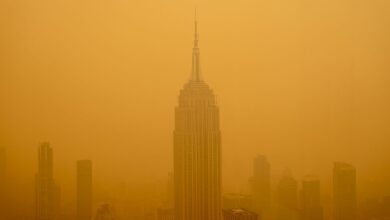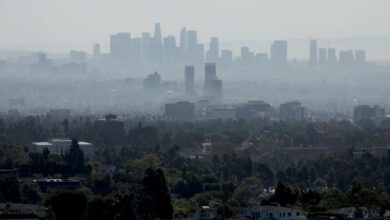The thick mantel of fog that embraced Cairo last week and plunged the city into a milky haze seems to be gradually lifting. With the persistent fog came poor visibility, particularly noticeable when crossing bridges across the Nile: For days in a row, one could hardly discern the shape of the buildings standing on the other side of the river, only a few hundred meters away.
According to Ahmed Abou al-Seoud, head of the regional branch office sector within the Egyptian Environmental Affairs Agency (EEAA), “The fog that stagnated over Cairo last week is a normal meteorological phenomenon created by a thermal inversion. We call a thermal inversion the warm air cap that forms itself over the city and does not dissipate or rise, and consequently traps the accumulation of pollution."
The stagnant winds did not help disperse this accumulation of pollution, explained Abou al-Seoud, who dismissed any linkage between the burning of rice straw and the fog that engulfed the city last week. “The season for torching rice straw waste is over. It happens every year in the same period between October and November,” he said. According to al-Seoud, the thick mantel of fog was not related to any human activity.
Hazem Salah, an environmental activist with the NGO Wadi Environmental Science Center (WESC), begged to differ. “There is a percentage of human responsibility, but of what proportion it is hard to tell. Cairo’s 12,000 factories are certainly not helping the dissipation of this smog,” he said.
In addition the topography of Cairo, which lies in a depression unlike its neighboring provinces, is most likely to attract thick layers of fog, said Salah.
The Ministry of Environmental Affairs issued a statement two weeks ago claiming it has managed to reduce air pollution by 78 percent, attributing this improvement to various anti-pollution measures it has taken.
With one of the biggest threats to air quality in Egypt being the open burning of garbage, the ministry removed 100,000 cubic meters of garbage from 40 locations situated along the Ring Road in order to reduce toxic emissions. The ministry also equipped 1200 buses with environmentally-friendly exhaust systems, along with 18,000 private cars and 20,000 new taxis–which does not however amount to much if one takes into consideration the four million vehicles that circulate in Cairo on a daily basis, many of which conspicuously spout plumes of noxious gases and particulates into the atmosphere.
Another major problem remains the burning of rice straw. Responsible for roughly six percent of air pollution on a yearly basis, this figure jumps to 45 percent during the harvesting months of October and November. The Ministry of Environmental Affairs has started to encourage the private sector to recycle their tons of rice straw.
“Today, five private companies are involved in this process and 700,000 tons of rice waste were recycled in 2010 instead of being torched,” said Abou al-Seoud, who added that the decrease in pollution during October-November this year compared to the same period in 2009 has been widely acknowledged. “These past two months were the peak of the rice straw burning, and people did not feel it at all!” he said.
Salah admits that the ministry’s initiative to provide farmers with a alternative way of disposing of rice husks shows that they are making an effort.
“But this is not enough. What needs to be done to enforce already-existing regulations on factories. This would have a drastic and immediate impact on pollution reduction,” he said.
The EEAA’s latest survey on air pollution, which dates back to 2002, identified the open burning of waste as the biggest threat to air quality. The Ministry of Environmental Affairs is now collaborating with a research institute in Nevada to produce a new study that will define the new priorities for protecting the environment.
“After eight years, the priorities won’t be the same, that’s for sure,” said Abou al-Seoud.




